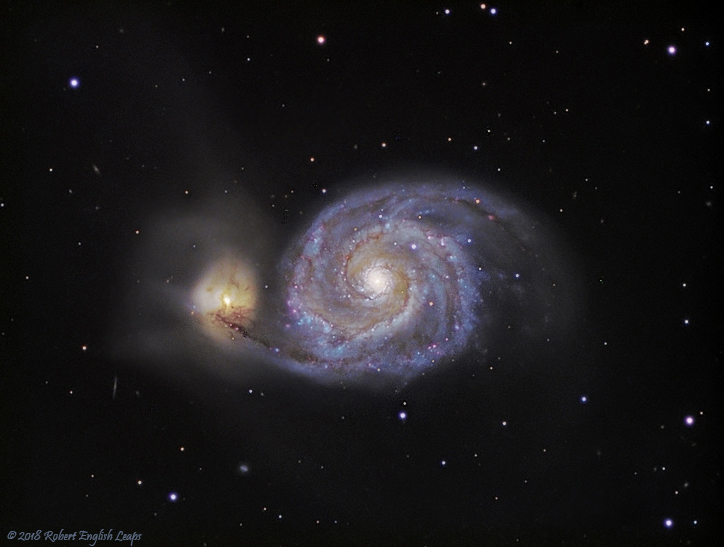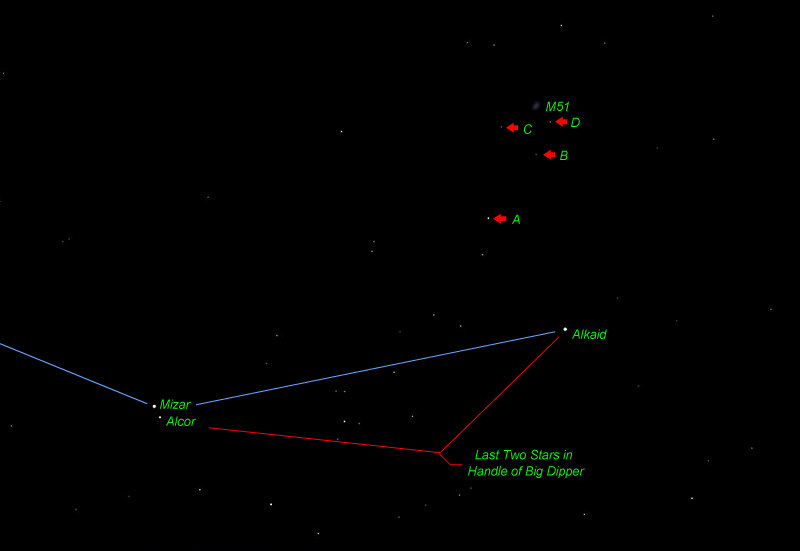There are lots of small background galaxies present in the image. Most just look like faint out-of-focus stars. Finding M51: Galaxies appear very different to the eye than they do in long-exposure images. Features like spiral arms are much dimmer and less distinct, and the eye is unable to see color at low light levels. With binoculars, the challenge is to see them at all - to pick out the small dim patch of light from the sky background. You will need a dark clear sky to be successful, and it may take several tries before you have the right conditions. If you succeed, though, the photons that are hitting the retina of your eye have been traveling through space for tens of millions of years. To find M51, first find the asterism known as the Big Dipper. The Big Dipper is formed by some of the stars of Ursa Major, the Great Bear. If you have not used binoculars at night before, practice by finding and looking at a very bright star like Arcturus. Don't take your eyes off the star when your raise the binoculars to your eyes. When you're satisfied that you can point the binoculars accurately, point them at Alkaid, the star that marks the end of the handle of the Big Dipper. To verify that you're in the right place, move the binoculars over to see Mizar and Alcor, the stars at the bend in the handle of the Big Dipper. Return to Alkaid. Find star "A" in the illustration above, which is a little more than 1/3rd of the distance from Alkaid to Mizar and Alcor, in a different direction. Once you find star "A", go about the same distance again to find the faint stars "B", "C", and "D". Messier 51 will be a dim hazy patch of light that forms a trapezoid with these three stars. Try using averted vision, looking to one side of the galaxy's position to make it more visible. In a small telescope, you may only be able to pick out the nucleus of both galaxies, looking like two dim hazy "eyes" looking back at you. For many people, it may take an 8" aperture telescope before any trace of the spiral arms can be seen. A 10" or 12" scope (or larger) will give a much better view of the arms. In all cases, a dark sky really makes a difference. Clicking on the illustration below will take you to a black-stars-on-white-background printable chart that will save you a little printer ink.
Wide Field View:
|
||||||||||||||||||||

